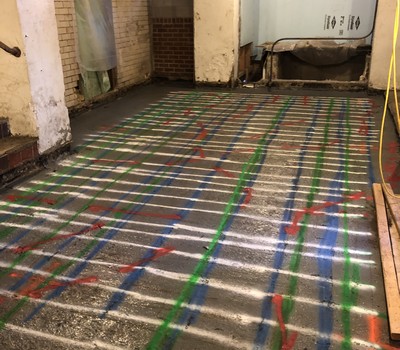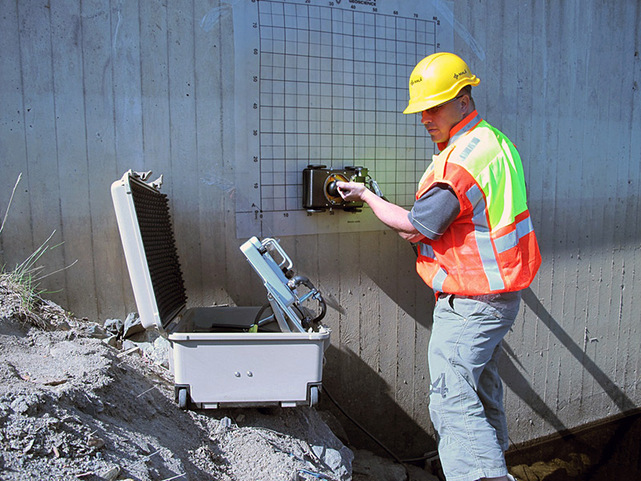Discover RainierGPR Service Areas for Reliable Concrete Scanning Solutions
Enhancing Job Preparation and Execution With Advanced Concrete Scanning Strategies
In the world of task preparation and precision, execution and insight are essential elements that can make the distinction between success and obstacles. Advanced concrete scanning methods have emerged as a sophisticated device established to boost the criteria of task administration within the construction industry.
Benefits of Advanced Concrete Scanning Strategies

Improved Precision in Job Evaluations
Enhancing project analyses with advanced concrete scanning techniques considerably boosts the precision and integrity of building evaluations. By using cutting-edge scanning innovations such as ground-penetrating radar (GPR) and 3D imaging, project groups can now get in-depth insights into the condition of concrete frameworks, identifying prospective imperfections or weak points that may not be noticeable to the naked eye. This boosted level of accuracy in project analyses enables building and construction professionals to make more educated choices relating to repair service and maintenance strategies, leading to improved overall job outcomes.
Furthermore, the boosted precision in task assessments accomplished via advanced concrete scanning methods helps in decreasing the risk of unanticipated issues during the building phase. By proactively detecting concealed abnormalities within concrete frameworks, such as rebar corrosion or voids, job teams can deal with these problems early on, avoiding costly delays and revamp later on in the task lifecycle. Ultimately, the improved accuracy in project assessments assisted in by innovative concrete scanning techniques contributes to higher performance, cost-effectiveness, and high quality in building and construction projects.
Early Recognition of Architectural Obstacles
Early discovery of structural difficulties plays a crucial role in ensuring the honesty and security of concrete frameworks throughout the building process. Determining prospective problems at a beginning permits for prompt intervention, avoiding costly rework, routine delays, and safety hazards. Advanced concrete scanning strategies, such as ground-penetrating radar (GPR) and 3D imaging, allow job teams to reveal surprise problems, spaces, support design disparities, and various other anomalies that can compromise the framework's security.
By implementing these strategies during the planning and implementation phases, building experts can proactively address structural difficulties prior to they intensify into major troubles. As an example, discovering inadequate concrete cover over support bars her comment is here at an early stage can avoid corrosion and architectural weakening in the future - RainierGPR Service Areas. Additionally, identifying variants in concrete thickness or thickness can assist optimize material use and ensure uniform stamina residential properties across the framework
Inevitably, early identification my explanation of architectural difficulties via advanced concrete scanning not only boosts the overall high quality and toughness of the building yet also adds to a more secure constructed environment for users and residents.
Boosted Precaution in Building
The application of durable safety and security procedures is crucial in the construction industry to alleviate threats and safeguard the health of stakeholders and workers. To improve safety and security steps, building and construction firms are significantly adopting technological innovations such as wearable devices that keep track of workers' vital indications and identify potential health issues in real-time. By prioritizing security through the incorporation of sophisticated modern technologies and thorough training programs, construction jobs can considerably decrease mishaps and create a safe functioning atmosphere for all included.
Streamlining Task Administration Processes
To enhance functional performance and ensure project success in the construction sector, an emphasis on simplifying job administration processes is necessary. By carrying out effective project monitoring procedures, building and construction jobs can lessen delays, reduce costs, and enhance overall productivity. One vital facet of enhancing project administration is using advanced modern technologies such as Building Information Modeling (BIM) software program, which allows real-time cooperation, clash discovery, and precise project organizing. Additionally, the fostering of cloud-based job management systems permits seamless interaction among group members, immediate accessibility to project data, and the ability to track development in real-time.

Verdict
To conclude, the use of sophisticated concrete scanning methods offers many benefits for task planning and execution. These strategies give enhanced accuracy in task analyses, very early recognition of architectural difficulties, enhanced safety actions in building and construction, and structured job administration processes. Including these techniques into task process can ultimately result in much more successful and effective outcomes in building and construction projects.
Ultimately, the boosted accuracy in project analyses assisted in by innovative concrete scanning techniques contributes to greater performance, cost-effectiveness, and quality in construction tasks. RainierGPR Service Areas.
To maximize operational effectiveness and make certain job success in the construction industry, a focus on streamlining task monitoring processes is important. By executing effective job management procedures, building projects can minimize hold-ups, lower prices, and boost total performance. By enhancing job administration procedures through innovation assimilation, clear interaction, and data-driven approaches, construction jobs can achieve better effectiveness, cost-effectiveness, and effective end results.
These techniques offer better accuracy in project assessments, early recognition of architectural difficulties, boosted safety actions in construction, and streamlined project monitoring processes.